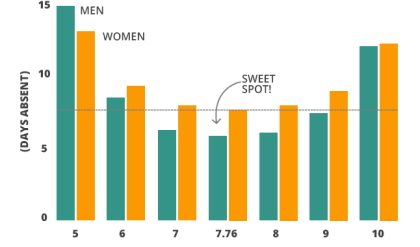
Work Smarter, Not Harder: 10 Remote Work Life Hacks
The allure of remote work – pajama-clad productivity, flexible schedules, the absence of a soul-crushing commute – is undeniable. But the reality can often veer into a chaotic blend of distractions and blurred boundaries. To truly thrive in the remote work landscape, it’s not about working more, but working smarter. Here are ten life hacks to transform your remote work experience from frantic to fantastic.
1. Conquer Your Calendar: Time Blocking Triumphs
Forget vague “to-do” lists. Embrace the power of time blocking. Schedule specific tasks for specific time slots, treating them like important appointments you can’t miss. This prevents task-switching, the productivity killer disguised as multitasking.
Pro Tip: Allocate time for breaks! Your brain needs a recharge.
2. The Power of “Power Hours”: Focused Frenzy
Identify your peak productivity periods. Are you a morning lark or a night owl? Dedicate these “power hours” to your most challenging tasks, when your focus is sharpest.
Pro Tip: Eliminate all distractions during these hours – silence notifications, close unnecessary tabs, and let your household know you need uninterrupted time.
3. Embrace the Pomodoro Technique: Short Bursts, Big Results
The Pomodoro Technique – working in focused 25-minute intervals followed by a 5-minute break – is a game-changer. It leverages the power of short, intense bursts of concentration, preventing burnout and maintaining momentum.
Pro Tip: Use a timer and stick to the schedule religiously. The breaks are crucial!
4. Ergonomics: Your Body Will Thank You
Working from home doesn’t mean sacrificing posture. Invest in an ergonomic chair, a supportive desk setup, and consider a standing desk converter for variety. Your back (and your overall well-being) will be eternally grateful.
5. The Ambient Atmosphere: Soundtrack Your Success
Background noise can be both a blessing and a curse. Experiment with different ambient sounds – calming nature sounds, instrumental music, or even “white noise” – to find what enhances your focus without being distracting.
6. Digital Declutter: Taming the Tech Tide
A cluttered digital workspace mirrors a cluttered mind. Regularly delete unnecessary files, unsubscribe from unwanted emails, and organize your digital folders. A clean digital space promotes clarity and focus.
7. The Art of Delegation: Don’t Be a Superhero
If possible, delegate tasks. Don’t try to do everything yourself. This frees up your time and mental energy for higher-priority activities.
8. Mindfulness Minutes: Breathing Space for Better Focus
Incorporate short mindfulness exercises into your workday. Even five minutes of deep breathing can significantly reduce stress and improve concentration.
9. The Importance of Boundaries: Work-Life Integration, Not Blur
Establish clear boundaries between work and personal life. Designate a specific workspace, set working hours, and resist the temptation to check emails or work outside those hours.
10. Celebrate Small Wins: Acknowledge Your Achievements
Don’t underestimate the power of positive reinforcement. Celebrate your accomplishments, no matter how small. This boosts morale and keeps you motivated.
| Hack | Description | Benefit |
|---|---|---|
| Time Blocking | Schedule specific tasks for specific times. | Increased focus, reduced task-switching |
| Power Hours | Dedicate peak productivity time to challenging tasks. | Maximum output during peak performance |
| Pomodoro | Work in 25-minute intervals with short breaks. | Improved focus, prevents burnout |
| Ergonomics | Invest in ergonomic equipment. | Prevents physical strain and discomfort |
| Ambient Sounds | Use calming background noise. | Enhances focus, reduces distractions |
| Digital Declutter | Organize your digital files and emails. | Promotes clarity and efficiency |
| Delegation | Assign tasks to others when possible. | Frees up time and mental energy |
| Mindfulness | Practice short mindfulness exercises. | Reduces stress, improves concentration |
| Boundaries | Separate work and personal life. | Prevents burnout, improves work-life balance |
| Celebrate Wins | Acknowledge your achievements. | Boosts morale, maintains motivation |
By implementing these ten life hacks, you can transform your remote work experience from a source of stress into a path to enhanced productivity and a healthier work-life balance. Remember, it’s about working smarter, not harder – and enjoying the journey along the way.

Additional Information
Work Smarter, Not Harder: A Deeper Dive into Remote Work Life Hacks
The assertion “work smarter, not harder” gains significant traction in the context of remote work, where the lines between professional and personal life often blur. While a concise list of “life hacks” offers a starting point, a deeper analytical examination reveals the underlying principles and potential pitfalls of each strategy. Let’s delve into ten remote work life hacks, exploring their effectiveness and potential challenges:
1. Establish a Dedicated Workspace: This seemingly simple hack carries significant weight. A dedicated workspace, even a corner of a room, signals a mental shift from “home” to “office.” Studies on environmental psychology have demonstrated the impact of physical settings on cognitive performance. For instance, a 2014 study in the Journal of Environmental Psychology found that individuals working in cluttered environments experienced higher stress levels and lower task performance compared to those in organized spaces. The key here isn’t just physical separation, but the consistent association of that space with work, thus improving focus and reducing cognitive switching costs. However, the feasibility depends on living conditions; those with limited space may need to implement alternative strategies, such as using specific furniture or time-blocking to signal work periods.
2. Utilize Time Blocking and Prioritization Techniques: Time blocking, integrating techniques like the Pomodoro Technique (25-minute work intervals with short breaks), allows for focused work sprints. Prioritization methodologies, such as the Eisenhower Matrix (urgent/important), ensure that crucial tasks receive the necessary attention. These strategies combat procrastination and improve overall productivity. However, rigidity can be detrimental. Over-scheduling can lead to burnout, while inflexible time blocks fail to account for unforeseen interruptions or emergent tasks. Adaptive time management, incorporating buffer time and flexibility, is crucial.
3. Master Communication and Collaboration Tools: Effective remote work hinges on proficient use of communication and collaboration platforms (Slack, Microsoft Teams, Zoom, etc.). Understanding asynchronous and synchronous communication nuances is critical. Asynchronous communication (email, project management software) allows for flexibility, but can lead to communication delays. Synchronous communication (video calls, instant messaging) fosters immediate interaction but requires careful scheduling to avoid disrupting individual workflows. The optimal approach often involves a blend, tailored to the specific task and team dynamics.
4. Leverage Automation Tools: Automating repetitive tasks (email filtering, social media scheduling, data entry) frees up time for higher-value activities. Tools like Zapier and IFTTT allow for seamless integration between different applications, streamlining workflows. However, over-reliance on automation can lead to a lack of human oversight, potentially resulting in errors or missed opportunities.
5. Embrace Asynchronous Communication: While synchronous communication is valuable, asynchronous communication fosters flexibility and autonomy. It allows team members to work at their peak productivity times, reducing pressure for constant availability. However, it can increase response times and potentially lead to communication breakdowns if not managed effectively. Clear communication protocols and expectations are essential.
6. Set Boundaries Between Work and Personal Life: This is arguably the most challenging aspect of remote work. Blurred boundaries can lead to overwork, stress, and burnout. Establishing clear start and end times, designated workspaces, and disconnecting after work hours are crucial for maintaining a healthy work-life balance. This requires discipline and communication with household members to minimize interruptions.
7. Regularly Schedule Breaks and Downtime: Breaks are not a luxury but a necessity for sustained productivity and well-being. Short breaks throughout the workday prevent burnout and improve focus. Longer breaks and dedicated downtime are crucial for mental and physical restoration. The optimal frequency and duration of breaks vary depending on individual needs and work demands.
8. Prioritize Self-Care: Remote work can lead to isolation and neglect of personal well-being. Prioritizing physical and mental health through exercise, healthy eating, mindfulness practices, and social interaction is paramount. Investing in self-care is an investment in long-term productivity and well-being.
9. Continuously Seek Feedback and Improve: Regularly seeking feedback from supervisors and colleagues allows for identification of areas for improvement. This iterative process of self-reflection and adjustment is crucial for continuous growth and enhanced effectiveness. Constructive feedback mechanisms should be established from the outset.
10. Stay Connected and Build Community: Remote work can lead to feelings of isolation. Actively seeking opportunities for social interaction with colleagues, attending virtual team events, and engaging in online communities can help combat isolation and build a sense of belonging.
In conclusion, effectively leveraging these remote work life hacks requires a nuanced understanding of their underlying principles and potential challenges. A tailored approach, considering individual preferences, work style, and context, is crucial for achieving sustainable productivity and well-being. The “smarter” aspect lies not just in adopting these techniques, but in adapting and refining them to suit one’s unique circumstances and continuously striving for improvement.






